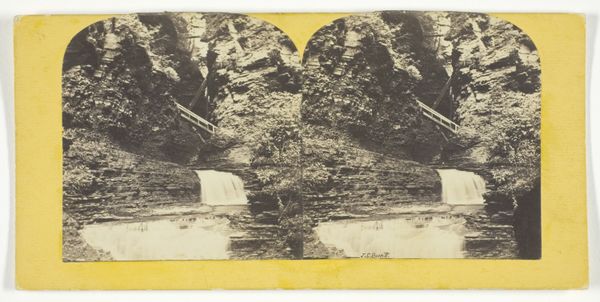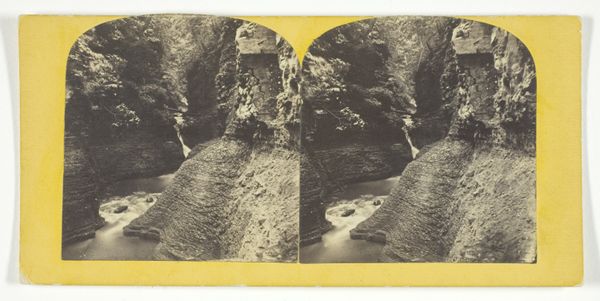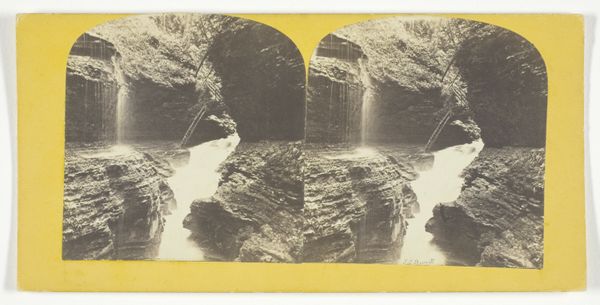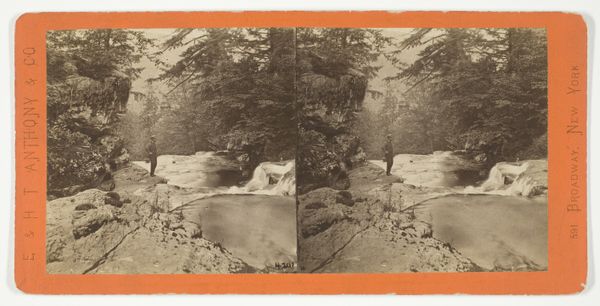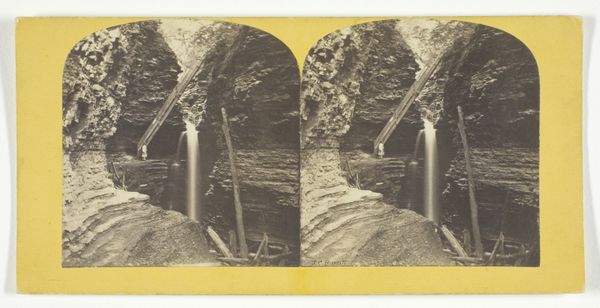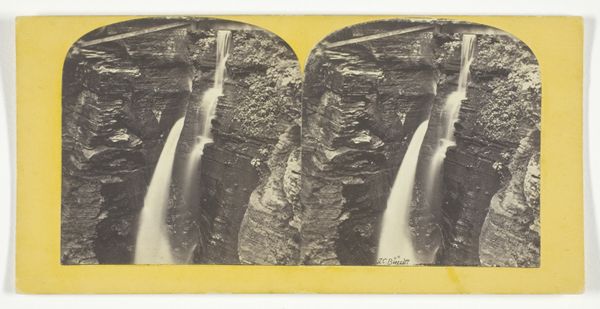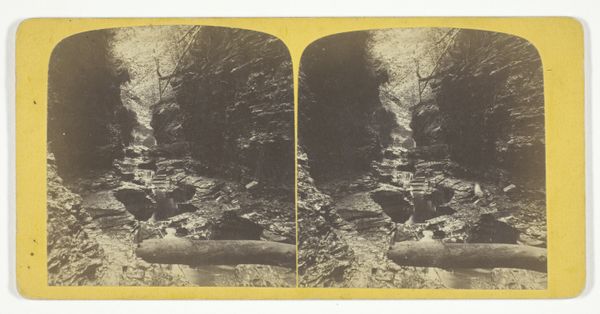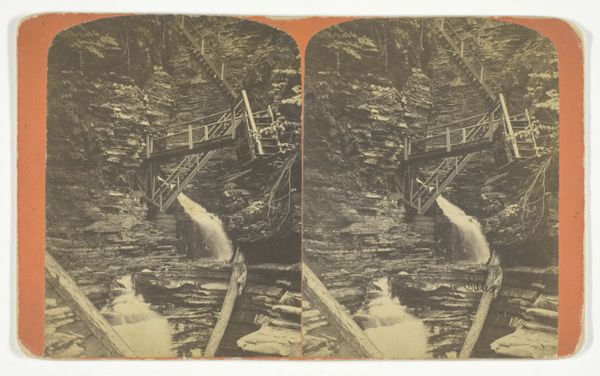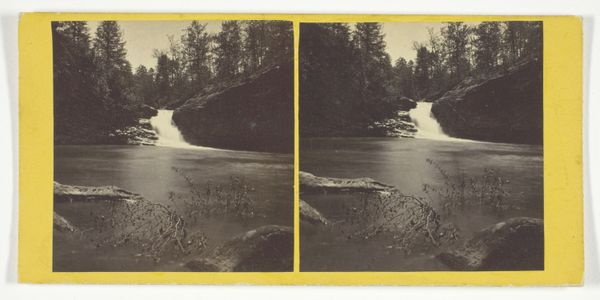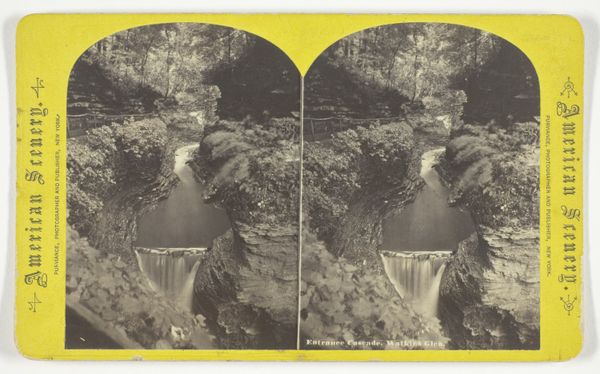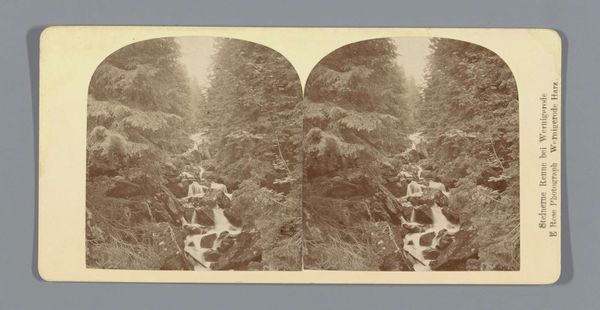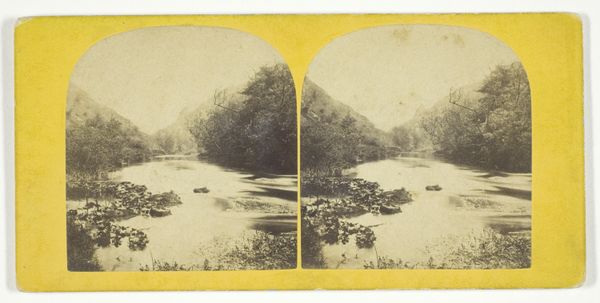
print, daguerreotype, photography, photomontage
# print
#
landscape
#
daguerreotype
#
photography
#
photomontage
#
hudson-river-school
#
realism
Dimensions: 7.5 × 7.2 cm (each image); 8.4 × 17.1 cm (card)
Copyright: Public Domain
Curator: This stereograph is titled "View in Freers, Glen of Watkins, N.Y." It was created between 1860 and 1865 by J.C. Burritt, and is currently housed here at the Art Institute of Chicago. The print showcases the natural beauty of Watkins Glen, captured through the relatively new medium of photography during that period. Editor: It's immediately striking how composed and balanced the scene appears, despite its wildness. The falls cascade beautifully, bisecting the dark, rugged cliff face behind them. It makes me feel a sense of peace and respect for nature's raw power. Curator: Absolutely, the Romantic aesthetics are unmistakable here. The falls evoke themes central to the Hudson River School. They venerate nature, hinting at ideas of sublime grandeur and spiritual significance—it's a landscape brimming with cultural weight. Water, so often symbolic of purity and renewal. Editor: It’s interesting to consider what that "purity" meant within the specific historical context. The image was created on the brink of ecological destruction due to industrial growth. A privileged escape is being constructed by framing a remote scene untouched by extraction. A form of romanticization that distracts from a harsh reality. Curator: That's a compelling reading. However, could the placement of the staircase also suggest the delicate intersection of industrial progress and the sublime wonder of nature, reflecting a very human yearning to connect with something "untamed" when removed from such an environment? Editor: Perhaps. But I think its important to unpack how this type of representation further alienated the Indigenous populations already dispossessed by white settler expansion. What landscapes are considered valuable, and who has access? I find these considerations integral to viewing images from this period. Curator: A vital point. Photography—particularly stereo photography—was very popular. Images like this helped create collective visual memories for the white upper and middle classes, while also contributing to certain historical amnesias. I appreciate how your questions unearth these latent social and historical factors. Editor: Thanks, reflecting on how these idyllic images also played a role in obscuring inequality hopefully enhances and complexifies our understanding and appreciation for them.
Comments
No comments
Be the first to comment and join the conversation on the ultimate creative platform.
